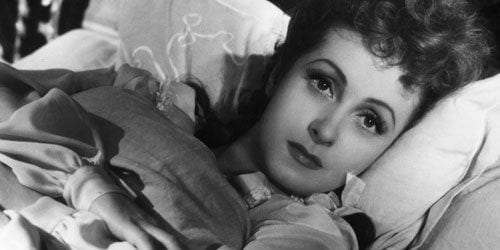
I am always worried that I have been corrupted by my tastes. I unabashedly love Billy Wilder films, the French New Wave, and most Woody Allen films. However, I fret and stir that I may fail as a reviewer in that I always hold films up to these standards. If older films do not have that sweet admixture of sarcasm and warmth of Wilder, I feel that they fail to connect. I shun stylized films that cannot integrate their stylistic innovation with philosophical innovation like Godard and Co. If modern films fail to address my sexual anxiety and incredulous attunement to the world around me, I fail to see their relevance. Does this make me a bad critic?
I honestly cannot say but I can assure you, I sleep alright. However, everyone once and a while a film comes along to review that should fit perfectly into the erratic film niche my affinities have carved out for themselves. Max Ophuls’ La Ronde is just such a film. “A French film from the ’50s about sexual misconduct?” I cried happily to my editor, “And it a Criterion? Oh sign me up.”
Alas, most high expectations are adept at crushing you. In film, it seems it might be best, to quote TLC, to “stick to the rivers and the lakes that you’re used to.” At least then, you won’t have to suffer the unbearable experience of watching your favorite devices co-opted by a film that manages so thoroughly to disappoint.
La Ronde does not really so much have a story as it is a grand conceit for the theme of the circularity of sexuality. Apparently, in mid-century France infidelity was prominent enough to warrant a film that argues, essentially, that everyone cuckolds everyone else and that sexual misconduct transcends class. I suppose I should actually say, in turn of the century France this was a terribly important concern because Ophuls’ Ronde is an adaptation of an 1897 play of the same name by Arthur Schnitzler.
The movie and play consist of several vignettes of couples having implicit sex, each connected to the other by a philandering partner from the previous scene. As expected, the last partner is also the first; the same prostitute begins and ends the film. Oh, how everything comes around.
The production quality is strikingly high and well supports the film’s tangential wanderings into song and general excess. The art design is meticulous and manages to create the illusion of a France outside of time that borrows from many different periods. Get it? This sex roundabout has always been happening in France.
If my thinly veiled cynicism is any indication, my overwhelming objection to the film is its heavy-handedness over a flimsy message. I can tolerate un-subtlety but only insofar as it is in the service of an elaborate argument. Otherwise, it’s just sloppy.
Consider the narrator character who appears to be some voyeur-cum-barker who sings very literal songs as he happens to show up at the entrance and exeunt of these stories. The movie is called, in translation, The Roundabout/ Round Dance and he is singing a song on a merry-go-round that mainly features the words “circle” and “round”.
Furthermore, ten similar vignettes later, even the densest film viewer would be hard-pressed not to get it. Sesame Street teaches youngsters how to count less explicitly than this film laments the sexual mores of France, circa 1950.
American films of this period are so happily charming precisely because the Hays’ Code forced them into an artistry of discreetness. Often referred to as the “Lubitsch touch”, many American dramas were able to sneak bits past censors through an incredibly refined codification of ambiguous sexuality. A fixing of a garter, a closed door, a jostling of hair: all of these could mean that our protagonists were having sex but nothing was firm. Instead we got a wink and a smile and we loved it. La Ronde trades that wink for a jab in the ribs and the “touch” for…well something more vulgar.
As usual in Criterion editions, the packaging and special features steal the show. The art on the case is sublime and its rough watercolor communicates both a certain class and a certain prurience, a perfect fit to its film. Included is a nice essay on the scandal of the erotic nature of the 1897 source play and the process of adapting it to the screen. The disc overflows with interviews and they do their best to argue for this film’s place in the canon. I am, however, unconvinced.
